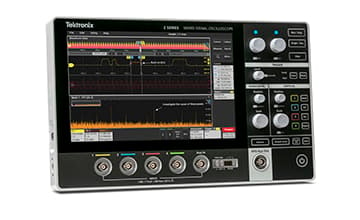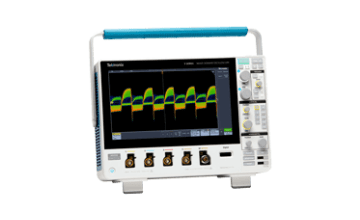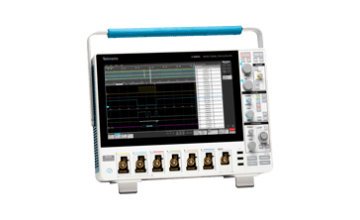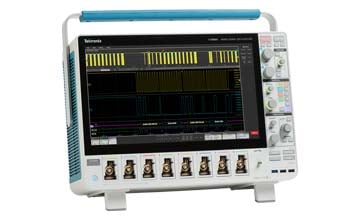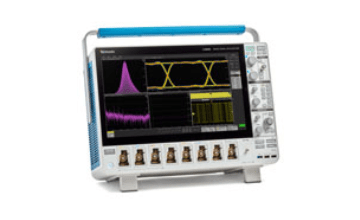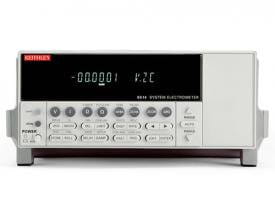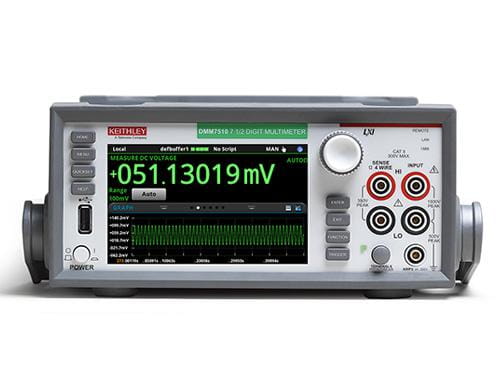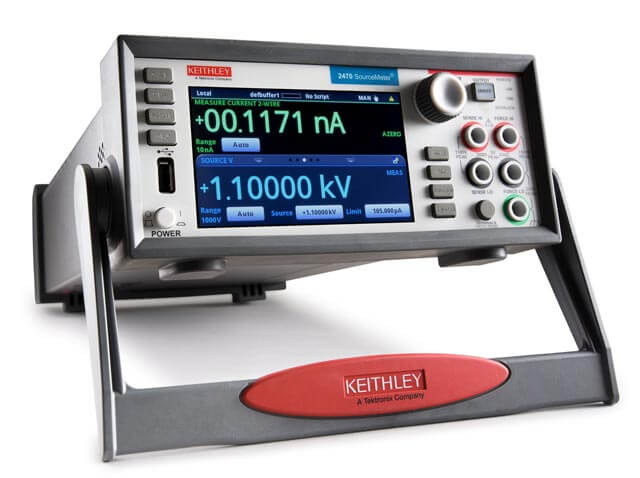联系我们
与泰克代表实时聊天。 工作时间:上午 9:00 - 下午 5:00(太平洋标准时间)。
致电我们
工作时间:上午9:00-下午5:00(太平洋标准时间)
下载
下载手册、产品技术资料、软件等:
反馈
Intro to Electric Vehicle Charging Station Requirements & Standards
Electric Vehicle (EV) Charging Stations, the powerhouses of the EV ecosystem, are subject to a variety of requirements and standards. These guidelines ensure that charging stations across the globe maintain a high level of safety, efficiency, and interoperability. They encompass aspects such as connector types, communication protocols, power quality, and safety measures. Developed by organizations including IEC, IEEE, and SAE, these standards promote compatibility across various vehicle models and charging equipment, thereby fostering the widespread adoption of electric vehicles. Explore the sections below to learn more.
Why EV Charging Standards Matter
EV charging station standards play a crucial role in the widespread adoption and safe operation of electric vehicles (EVs). These standards ensure that the charging infrastructure is reliable, efficient, and safe for both a wide range of electric vehicles and the user. Here’s why EVSE standards matter:
- Ensures Compatibility and Accessibility: EVSE standards are crucial as they ensure that electric vehicles can connect seamlessly to the grid anywhere, facilitating widespread adoption by standardizing plug designs, communication protocols, and power methods. This compatibility extends the range and usability of EVs by making charging accessible and straightforward.
- Enhances Safety Measures: The standards include essential safety measures to prevent overloading the electrical circuit during charging. By doing so, they safeguard not only the physical infrastructure but also enhance user safety by mitigating risks of electrical fires and other hazards.
- Secures Charging Process: Before power is even transmitted, EVSE standards require a secure connection between the vehicle and the charging station. This step is fundamental in preventing electrical shocks, ensuring that power flow begins only when it is completely safe to do so.
- Protects Battery Health: The longevity and efficiency of EV batteries are directly linked to how they are charged. EVSE standards regulate the charging process to optimize battery health and prevent damage, thus ensuring the vehicle’s reliability and performance over time.
- Facilitates Smart Energy Management: By enabling the collection of data during charging, EVSE standards support not just billing and grid management but also help users monitor and adjust their energy use. This data is instrumental in promoting efficient energy practices and can lead to improved charging habits.
- Reduces Costs: Compliance with EVSE standards can lead to significant cost savings by reducing the overhead associated with the installation and maintenance of charging stations. It ensures that equipment is compatible and meets safety protocols, which can decrease the need for frequent upgrades or repairs.
- Fosters Innovation and Competition: Implementing IEEE, SAE, and IEC standards creates a level playing field where manufacturers can focus on improving technology and user experience rather than on compatibility issues. These standards ensure interoperability and safety, allowing new players to enter the market and push the boundaries of innovation.
In summary, IEEE, SAE and IEC standards not only facilitate the widespread adoption of electric vehicles by ensuring users can charge their vehicles safely and conveniently but also fosters innovation and competition in the EV industry.
EV Charging Standards Bodies
Several organizations play a crucial role in ensuring the safety, consistency, and interoperability of EV charging systems. They provide clear expectations for manufacturers, installers, and business owners.
The fast switching speeds and voltage levels of SiC MOSFETS introduce measurement challenges due to high bandwidth and common mode voltages. EVSE test equipment solutions, including oscilloscopes with optically isolated probes and analysis software, Oscilloscopes with optically isolated probes and analysis software deliver accurate measurements even on high slew-rate, high common mode voltage signals. These include:
- Society of Automotive Engineers (SAE):
- Focuses on the automotive and mobility aspects.
- Provides specific instructions on how to manufacture and install EV couplers.
- Writes the standard SAE J1772.
- Underwriters Laboratories (UL):
- Ensures the safety and reliability of electrical devices and systems.
- Focuses on the design and safety of plugs, cords, receptacles, and connectors.
- National Electrical Code (NEC):
- Provides guidelines for safe electrical installations.
- Offers guidance on safety when charging electric vehicles.
- International Electrotechnical Commission (IEC):
- Concentrates on electrical systems, services, and products
- Creates standards like IEC 61851 for EVSE types and IEC 62196 for charge coupler standard
- Institute of Electrical and Electronics Engineers:
- Specializes in electronics and computer science
- Responsible for the National Electric Safety Code
- International Organization for Standardization:
- Covers a broad range including energy, food safety, IT, health, and safety
- Developed ISO 15118 for vehicle-to-grid communication interface
- CiA (CAN in Automation):
- An international users' and manufacturers' group that develops and supports CAN standards, ensuring interoperability and standardization across various applications, including EV charging.
- DIN (Deutsches Institut für Normung e.V.):
- The German national organization for standardization and is the German ISO member body.
- CHAdeMO Association:
- Develops fast-charging protocols for electric vehicles.
- Founded in 2010 by TEPCO (Tokyo Electric Power Company) and major Japanese automakers including Nissan, Mitsubishi, and Fuji Heavy Industries.
- China GB (Guo Biao) Standards:
- National standards issued by the Standardization Administration of China (SAC), relevant to EVSE in China.
Types of Standards Related to EV Charging
Safety
Safety standards ensure that all aspects of electric vehicle charging are secure to prevent any electrical hazards. Examples include:
- IEC 61851-1: This international standard covers general safety requirements for electric vehicle conductive charging systems, detailing the construction and testing of EV charging stations to prevent electrical shocks and ensure structural integrity.
- UL 2202: A standard used primarily in North America, it specifies requirements for the safety of electric vehicle (EV) charging equipment, focusing on fire and electrical shock protection.
- NEC Article 625: Part of the National Electrical Code, it provides guidelines for the installation of electric vehicle charging stations, including safety protocols for wiring and protection against overcurrent.
These standards are designed to ensure that the equipment is safe from electrical failures, users are protected from electrical shocks, and the systems have automatic mechanisms to shut down in emergencies, thereby safeguarding both the infrastructure and its users.
Interoperability
Interoperability standards facilitate the use of various electric vehicles with different charging stations, promoting widespread EV adoption. Examples include:
- ISO/IEC 15118: This standard outlines the communication protocol between electric vehicles and the charging station. It supports the use of a variety of EVs at any compliant charging station, enabling features like plug-and-charge (PnC), which simplifies the charging process for EV drivers.
- CHAdeMO/ChaoJi: A fast-charging standard from Japan that allows electric vehicles from manufacturers like Nissan, Toyota, and Mitsubishi to charge at stations equipped with CHAdeMO technology. It ensures that vehicles and stations can communicate effectively to facilitate rapid charging. ChaoJi is the next iteration compatible with GB/T and CHAdeMO.
- IEEE 1547: This standard establishes criteria for the interconnection and interoperability of distributed resources with electric power systems. It ensures that the power transfer is efficient and minimizes energy loss during the EV charging process.
- SAE J1772: A North American standard that provides guidelines for EV electrical connectors and charging methods. It specifies the configuration of the charge connector and electrical interfaces, which are optimized for efficient power transfer and compatibility with multiple EV models.
- MCS (Megawatt Charging System): The Megawatt Charging System is a new standard designed to support the high-power charging needs of large electric vehicles, such as trucks and buses. Developed by CharIN (Charging Interface Initiative e.V.), the MCS aims to provide charging power levels exceeding one megawatt (1 MW).
- CHAdeMO/ChaoJi: A fast-charging standard from Japan that allows electric vehicles from manufacturers like Nissan, Toyota, and Mitsubishi to charge at stations equipped with CHAdeMO technology. It ensures that vehicles and stations can communicate effectively to facilitate rapid charging. ChaoJi is the next iteration compatible with GB/T and CHAdeMO.
By standardizing communication and physical connections, interoperability standards ensure that electric vehicles can use a broad network of public charging stations, enhancing user convenience and encouraging more consumers to transition to electric vehicles.
EV Charger Systems Standards
The IEC 61851 series sets the standards for electric vehicle conductive charging systems. These standards cover a range of topics, from general requirements to communication protocols between DC EV charging stations and electric vehicles. Explore the links in this section to learn more about IEC 61851.

Standards Related to EV Chargers
- IEC 61851-1: General requirements for EV conductive charging systems.
- IEC 61851-21: Defines vehicle types and communication safety requirements.
- IEC 61851-22: EV requirements for conductive connection to an AC/DC supply.
- IEC 61851-23: EV requirements for conductive connection to a DC supply.
- IEC 61851-24: Requirements for control communication between DC EV charging station and an EV.
EV Charging Connector Standards
Designing and operating EV charging connectors involves detailed specifications for charging plugs, vehicle inlets, and the conductive charge coupler. High-speed communication via electric power lines, often referred to as broadband over power lines (BPL), is also a crucial aspect. Ensuring compatibility and safety across different electric vehicle models and charging equipment is a key focus. See the specific standards providing these guidelines below.

EV Charging Standards Related to Connectors
- IEC 62196–1: Standardization of charging plugs and vehicle inlets.
- IEC 62196–2: Specific details on plugs, socket-outlets, vehicle connectors, and vehicle inlets.
- IEC 62196–3: Dimensional interchangeability requirements for pin and contact-tube accessories.
- SAE J1772: Electric Vehicle Conductive Charge Coupler.
- IEEE 1901: High-speed communication devices via electric power lines, often called broadband over power lines (BPL).
- SAE J3400: North American Charging Standard (NACS).
- CHAdeMO 3.0 (ChaoJi): Co-developed standard between CHAdeMO and China Electricity Council (CEC).
EV Charging Communication Standards
EV Charging Communication is governed by standards that outline the protocols for communication between electric vehicles and their charging equipment, and detail energy transfer options in public access locations. They play a crucial role in ensuring efficient and reliable communication for EV charging. We included the important standards below.

EV Charging Standards Related to Communication
- ISO 15118/IEC 61850: Protocol for EV-EVSE communication.
- SAE J2836: Protocol for EV-EVSE communication.
- SAE J2847: Ensures interoperability and control in WPT between EVs and charging stations.
- SAE J2293-2/OCPP: Governs energy transfer within public access locations.
- OSCP/OCPI: Governs energy transfer within public access locations.
- OpenADR: Facilitates automated, two-way communication for demand response and DER management.
- CAN (Controller Area Network): A robust vehicle bus standard designed to allow microcontrollers and devices to communicate with each other without a host computer. It is widely used in EVs to facilitate communication between the EVSE and the vehicle.
EV Charging Grid Connection & Power Quality Standards
EVSE installations must comply with local electrical codes and utility standards. Power quality standards govern the extent to which EVSE impacts the grid. They address power quality requirements for EV chargers and set limits for harmonics and voltage fluctuations. These standards are key to developing and operating a reliable and effective EV charging infrastructure.

EV Charging Standards Related to Power Quality
- IEEE 1547: Guidelines for the safe interconnection of distributed resources with power systems.
- SAE J2894: Defines power quality requirements for Plug-In Electric Vehicle chargers.
- IEC 61000-3-2: Specifies limits for harmonic current emissions from electrical equipment.
- SAE J2380: Describes the vibration durability testing procedure for electric vehicle batteries.
Tektronix offers oscilloscope-based testing software that helps address many power supply design and power quality measurements:
- Double-pulse testing, for dynamic validation of wide bandgap power devices (SiC/GaN).
- Power analysis, including power quality, harmonics, switching analysis and magnetic analysis.
- Control Lop Analysis: Bode, PSRR and impedance measurements.
- Inverter, motor and drive analysis for inverter testing and 3-Phase measurements.
- Protocol decoders for key serial buses, including SPI, I2C, CAN and over 25 more.
EV Charging Safety Standards
Ensuring the safe operation of EV charging systems is crucial as the number and size of charging systems scales globally. As such, there are important safety standards and regulations that have been developed that relate to aspects such as the protection provided by enclosures and the specifications for traction battery packs and systems. Adherence to these guidelines is crucial in preventing accidents and ensuring the safe use of EV charging infrastructure. Check out the standards below for more info.

EV Charging Standards Related to Safety
- IEC 60529: Degrees of protection provided by enclosures (IP Code).
- ISO 6469–3: Safety specifications for traction battery packs and systems.
- IEC 60364-7-722: Safety specifications for traction battery packs and systems.
- SAE J1776: Safety standards related to electric vehicles.
- SAE J2464: Safety standards related to electric vehicles.
Products
Resources
Frequently Asked Questions About EV Charging Standards
What are EV charging standards?
EV charging standards determine how electric vehicles are charged, specifying the type of plug and the charging method. Common standards include CCS, CHAdeMO, and Tesla Supercharger, each supporting different speeds and compatible with specific vehicles.
What types of connectors are commonly used for EV charging stations?
EV charging stations typically use connectors such as J1772 (Level 2 AC) and Combined Charging System (CCS) for DC fast charging. These connectors are widely adopted and compatible with most electric vehicles.
Why are there different EV charging standards?
Different standards exist because automakers have developed their own technologies or have formed groups to support specific types of technology. This diversity aims to improve technology, safety, and user experience while competing in the market.
What is CCS and why is it widely used?
The Combined Charging System (CCS) is a standard that supports both AC and DC charging, offering flexibility and fast charging capabilities. It is widely used because major automotive manufacturers in the U.S. and Europe support it, making it a common choice for new electric vehicles.
How does CHAdeMO differ from CCS?
CHAdeMO is primarily a DC fast charging standard developed in Japan. Unlike CCS, which is integrated into a single connector for both AC and DC charging, CHAdeMO requires a separate connector and is mainly supported by Japanese manufacturers like Nissan and Mitsubishi.
What makes Tesla Supercharger unique?
Tesla Superchargers are proprietary charging stations designed for Tesla vehicles, providing very high-speed charging. They use a unique connector that isn't compatible with other standards without an adapter.
What are the charging levels and how do they differ?
Level 1 charging uses a standard 120V outlet and provides slow charging, suitable for overnight use. Level 2 charging uses a 240V outlet, offering faster charging suitable for daily use at home or public stations. DC Fast Charging (Level 3) uses high-voltage direct current (DC) for rapid charging, ideal for long-distance travel.



